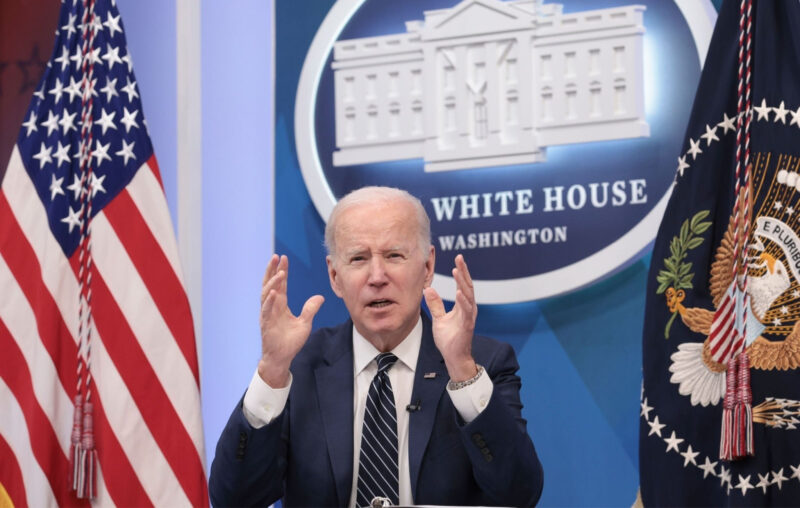


The Biden administration has floated another bloated budget, one that will put the US national debt at $43.6 trillion by 2033, assuming its optimistic growth and interest-rate projections pan out and the Ukraine war ends. If this budget passes, the debt will hit 110 percent of GDP, federal spending will exceed 25 percent of GDP, and federal revenue will top 20 percent of GDP, with the balance borrowed.
The details induce queasiness. Some $5 trillion in tax increases are slated, including $119 billion by reducing the so-called “tax gap,” code for increased IRS scrutiny of small businesses. Some $3 trillion is to come from increasing the stock-buyback tax from 1 to 4 percent, increasing other corporate taxes, raising the corporate income tax from 21 to 28 percent, and reforming international tax rules, as if large corporations will just pay up and not move out.
Individuals will pay more, too, with the top income tax rate increasing from 37 to 39.6 percent, with capital gains and estate taxes increasing, too. A 25 percent tax on the “unrealized income” of billionaires is projected to raise $437 billion, though its constitutionality appears dubious. The plan also relies on bracket creep – by raising tax brackets more slowly than inflation, nominal taxes for the middle and lower classes will increase, even if their inflation-adjusted wages continue to stagnate.
That might all be palatable, were the money used to pay down the national debt, and not to increase funding for a bunch of stuff that needs to be reformed, not fed with more federal cash.
At the top of the list is a $600 billion increase to expand funding for pre-K and child care. Fact is, over-the-top regulation and out-of-control occupational licensing has driven up the cost of childcare without any increase in quality. Reverse those policies and daycare costs would drop without costing taxpayers a cent. (Besides, given what is going on, and not going on, in government schools, how many parents are going to want their babies and toddlers attending government-funded daycare and pre-K?)
Next is $325 billion slated to establish national paid family and medical leave, a matter best left to employers and employees.
Then there is $217 billion to offer “free” community college and other higher education subsidies. It has been shown, repeatedly, that the latter simply raises tuition costs. The former will induce many young adults to waste a few years, as everyone knows how people treat things that they do not have to pay for themselves.
Another half-trillion is headed to the Affordable Care Act, which has turned out to be neither affordable nor very caring, and the Indian Health Service, which is so bad that the US government ought perhaps to pay reparations for imposing it on American Indians. Another almost half-trillion goes to other miscellaneous health care, and other spending increases. I’m afraid to delve too deeply into those, for fear I’ll need cardiac care that I cannot afford.
A final $105 billion is slated to support affordable housing. As with childcare, the government’s own rules and regulations are the biggest barriers to improvement. Deregulate mortgage markets, modernize building codes, and reform zoning, and the contractors will build and refurbish enough units to suit everyone.
The Biden administration’s goal seems to be to spend lots of money on new, unnecessary programs or failing, existing programs, and to pay for it with yet more debt and with novel taxes likely to fall more heavily on middle-class Americans and small businesses than on big corporations or the rich. If it does not break America outright, it will strain its fiscal capacity to the point that the government might not be able to respond effectively to a major war or other crisis.
It’s high time that we take seriously Democrat Bill White’s suggestion that US policymakers return to the unwritten fiscal constitution in place between the nation’s founding and the administration of George W. Bush. Its commonsense borrowing and taxing principles encouraged economic growth while keeping some fiscal capacity in reserve in case of emergency.
TELL YOUR FRIENDS ABOUT CITIZENS JOURNAL Help keep us publishing –PLEASE DONATE




